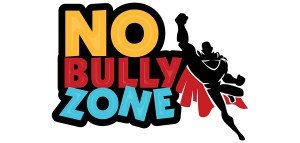
Promote Diversity To Encourage Anti-Bullying Behavior
Every parent and teacher understands that children mimic. They want to be like us, talk like us, act like us. They don’t understand sarcasm, and they often don’t understand that when they hear adults–in stores, at parks, on television–say certain things about someone’s physical appearance, gender, or ethnicity, that these statements are matters of opinion and should not be repeated. This exposure to “casual bullying” is something you can’t control. After all, you can’t control the way other adults behave. You can control how your children or students behave though.
In “Bullying And Back-To-School” I discussed the importance of building a positive learning environment inside the classroom, a “safe space” so to speak, where students can feel safe, cared for, and respected. I also dove into the bare basics of bullying, covering the three types (verbal, social, physical), and the six ways students became involved in bullying. Bullying–defined as unwanted, aggressive behavior among school aged children that involves a real or perceived power imbalance–is based a lot on reputation. A bully has a reputation of being tough, usually someone who is outspoken and has friends to back them up. Someone other students look up to or admire. A victim often has a reputation of being weak, someone who is quiet or introverted, who may not have many friends or prefers books, toys, and games that their classmates perceive as “childish.” In many cases, victims are perceived as “different.”
The best way to promote anti-bullying behavior is to celebrate their differences!
Create A Classroom Culture That Celebrates Diversity
Diversity improves critical thinking, builds empathy, and explores all the things that make us different: race, ethnicity, gender, religious beliefs, ability, status. Promoting diversity at a young age can help to build an accepting society that doesn’t champion inequality, a struggle we continue to face. Supporting diversity means supporting different perspectives, challenging students to develop their own conclusions and break stereotypes.
Three Simple Ways To Cultivate Classroom Diversity
Elementary school is the perfect time to promote diversity because this is the time when students are discovering who they are and what they want in life. Here are three simple ways any educator can cultivate classroom diversity:
Rethink Your Reading Materials
Reading in elementary school is crucial for improving both literacy and verbal skills. One of my tips for motivating students to participate in in-class reading is to create a “reading corner” with minimal distractions. In this space you can use shelving or containers to display books that feature characters of all backgrounds such as:
- “The Name Jar” by Yangsook Choi, about a Korean immigrant who feels she has to change her name to fit in with her new American classmates.
- “Same, Same But Different” by Jenny Sue Kostecki-Shaw, about two pen pals, one from America, the other from India, who celebrate both their similarities and differences
- “Marisol McDonald Doesn’t Match” by Monica Brown, Illustrated by Sara Palacios, about a Peruvian-Scottish-American who learns to embrace her “her whole, multi-faceted self.”
- “Noah Chases The Wind” by Michelle Worthington, Illustrated by Joseph Cowman, about an autistic boy (although the author never explicitly uses this term) to find his own answers about where the wind goes.
- “We’ll Paint The Octopus Red” by Stephanie Stuve-Bodeen and Pam Devito, about a girl whose new baby brother has Down syndrome.
- “Susan Laughs” by Jean Willis, about a girl named Susan and all the things she can do. On the last page, you see her wheelchair.
- “Hanni and Beth: Safe and Sound” by Beth Finke, told in the point of view of a seeing eye dog about her blind guardian, Beth.
Make reading time inclusive for all your students by educating and entertaining them at the same time.
Be Open About Discrimination
As an adult, we know the difference between right and wrong but again, children mimic. As an educator, your job is to teach. This goes beyond reading, writing, and arithmetics. You need to be willing to teach humanity, compassion. As difficult as it might be, when we see discrimination happening, we need to address it immediately. Don’t make a spectacle of the situation–you never want to embarrass the student being bullied–but turn a bad situation into a positive learning moment.
Teach Multiculturalism
Embrace the different cultures represented by your students and do fun activities where these cultures are celebrated. For example, you can have students bring in a treat that represents their heritage. (Food is always a winner!) Then you can discuss the cultural history behind these dishes. A perfect activity for around Thanksgiving!
Or have students dress up in clothing representative of their culture and have your students describe the custom, holiday, or tradition where this clothing is worn.
Remember: it’s okay to ask questions. After all, you’re not promoting one culture as better than another, you’re simply creating a space where these cultures are shared and supported!

“No Bully Zone”
Our reputation is how others see us but I like to take the idea one step further to teach character: who we are when no one is looking. Character encompasses a plethora of qualities such as respect, fairness, responsibility, caring, citizenship, and trustworthiness, all of which set the foundation for that positive learning environment. While my character education school assembly “Yes I Can!” focuses on all six pillars of character, “No Bully Zone” focuses on respect and diversity. It goes beyond a simple “be nice, don’t bully” message to create a clear understanding of what bullying behavior is and what to do when your students encounter bullying. Click here to learn more about “No Bully Zone” or contact me today for more info!


